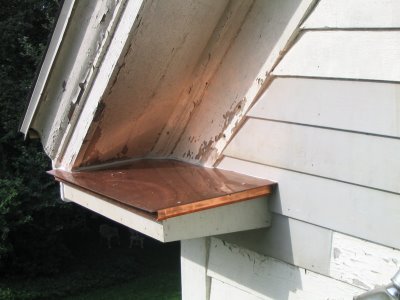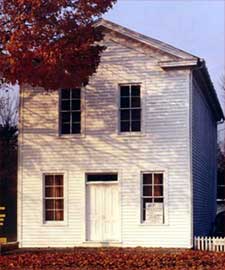Image: www.in.gov/dnr/images
Repairing Greek Revival Cornice Roof Returns
Below picture: this house had rotted roof rake returns.
The owner wanted to preserve the look of the returns but being mostly a horizontal surface they take a beating from the weather. These horizontal surfaces are usually the first spot to rot out because snow and rain often collect on them. I’ve found that over the years painters, homeowners, etc often neglect this area because of its height and access issues. sometimes people opt to have these returns “boxed In” which really ruins the look of the house.
The Practice of Using Metal Flashing
Over the years I’ve seen different approaches to preserving these roof returns – usually with lead or aluminum flashing. I prefer copper and think it’s the best looking option. Wrapping these Greek Revival roof returns in copper and allowing the copper to weather into a nice patina actually creates a nice looking detail.
I started out by replacing all of the rotted wood. A slight pitch is built into the return shelf to shed rain water and melting snow.
Copper Drip Edge Starts The Repair
I then installed copper drip edge to the front and side edges of the Greek Revival return. The drip edge allows me to bend copper over its edge to create a secure copper cover. The copper top slips into the fascia / sofit cavity and is bent up to fit against the sidewall of the house. I then secure it with copper nails. I always put the copper nails into elongated holes to allow for expansion and contraction.
This repair is good for a 100 years.


